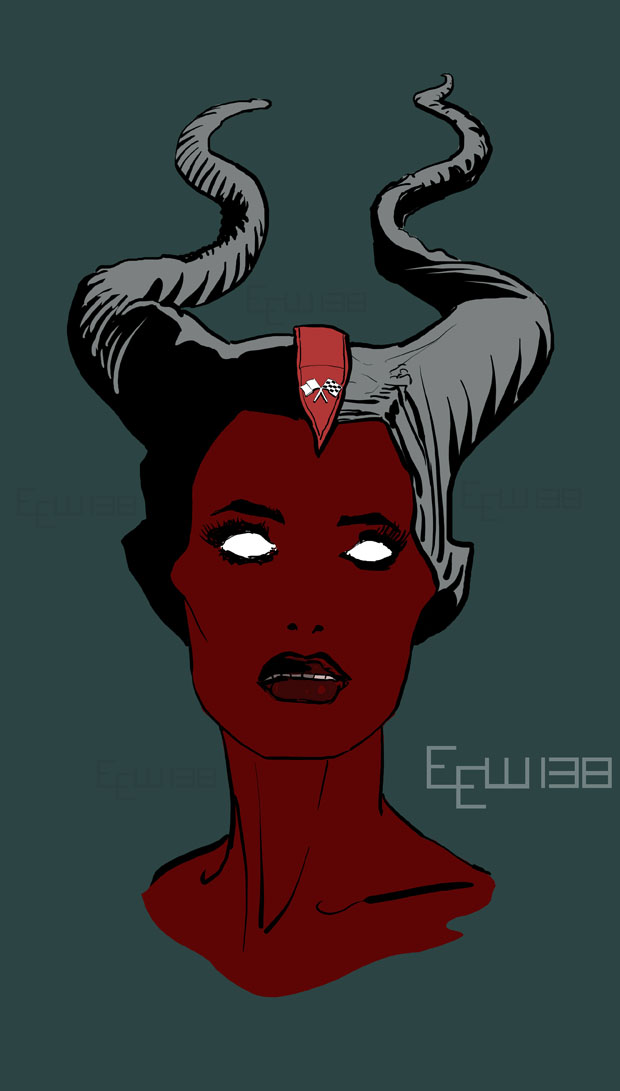Maleficent II: Mistress of Evil

The tale in Maleficent II: Mistress of Evil is primarily about the relationship between "Mother" (Maleficent played by Angelina Jolie) and "Beasty" (the character is actually named Aurora, is a princess, and is played by Elle Fanning) which is stretched to the breaking point by the extreme Machiavellian machinations of evil Queen Ingrith (played by Michelle Pfeiffer).
The two combatting leads of Jolie and Pfieffer are given a heavy veneer of makeup, are heavily filtered, but so is a great deal of the rest of the film which is bathed deeply in the river of Disney's "more is more" aesthetic, and then that is surrounded by enough computerized creatures, castles and landscape that hardly anything seems real at all.
There's a very long battle (which is frankly rather boring until Maleficent shows up in her "battle suit" of a punk rock shredded top) and then the combat with swords and armor begins to be done in earnest, as if everyone was just waiting for the star to appear before putting any effort into the mayhem.
The downside is that so little of this military conflagration is humanized and the movements of the soldiers are so choreographed either by director Joachim Ronning or by some sort of computerized cloning technique of on screen figures that it made me think of Monty Python skits where troops march around in cartoon like ways. Perhaps that effect is entirely intentional because obvious and direct humor in Maleficent II: Mistress of Evil is pretty sparse, a disappointment since the 2014 film Maleficent did contain a much richer ratio of humor to phantasy adventure.
The dialogue is predictable and rather thin. The story telling degenerates as the lengthy battle towards the end goes on and on, with a CGI castle that has imposingly tall towers that seem to be one height, compared to the woods that are directly across the river, and in other scenes the towers seem to be at a different height from the ground. For that matter, in one pivotal scene in which Princess Aorora must get to the top of a tower quickly, she goes from the ground to the top within seconds from within the gigantic building and the explanation that came to my mind was that she was blasted upward riding Charlie and the Chocolate Factorie's Great Glass Elevator (however, that's an IP owned by Netflix, not Disney).
We get pretty deep into the story in Maleficent II: Mistress of Evil before any explanation for why Queen Ingrith (Pfieffer) is so mean and tricky (and defames Maleficent, hence the "Mistress of Evil" title). It turns out Ingrith has a grudge from her childhood in which her family was starving because "the harsh winter killed all the crops." The world where the characters live seems utterly unlikely to have any crops whatsoever during winter, harsh or otherwise, but this childhood trauma has become a lethal blame-game mostly taken out on magical creatures (but also the King, played by Robert Lindsay), and administered through the evil scientific genius of a dwarf named Lickspittle (played by Warwick Davis).
There's a pretty heavy body count from the battle, but when the end arrives and the survivors are together and are smiling and enjoying each other (leading to a wedding very shortly thereafter) they don't seem to have any feelings about all the carnage and loss of life that was just minutes before consuming all of their attention. Lickspittle is among this group and nobody seems to mind he was previously tormenting magical creatures (or actually killing them. At first the film shows the creatures being atomized into a pixie powder, or more likely, dust. That looked very violent and permanent at the time, but by the end, like much else, the film was just kidding).
Instead of operating on multiple levels simultaneously for children and/or adults (as did the original Maleficent), Maleficent II: Mistress of Evil is overwhelmed with the powerful CGI effects (which are quite gorgeous most of the time, with a great tribe of winged beings that look like the bird people from Alex Raymond's Flash Gordon comic strip of nearly a hundred years ago), and by the last section of the movie has given up doing anything but reaching a "happily ever after" ending no matter what the cost in storytelling coherence. Saying "well, it's for kids" as a way out is a disservice to kids.
What's Recent
- The Devil and Miss Jones - 1941
- Sinners - 2025
- Something for the Boys - 1944
- The Mark of Zorro - 1940
- The Woman They Almost Lynched - 1953
- The Cat Girl - 1957
- El Vampiro - 1957
- Adventures of Hajji Baba – 1954
- Shanghai Express 1932
- Pandora's Box – 1929
- Diary of A Chambermaid - 1946
- The City Without Jews - 1924
- The Long Haul
- Midnight, 1939
- Hercules Against the Moon Men, 1964
- Send Me No Flowers - 1964
- Raymie - 1964.
- The Hangman 1959
- Kiss Me, Deadly - 1955
- Dracula's Daughter - 1936
- Crossing Delancey - 1988
- The Scavengers – 1959
- Mr. Hobbs Takes A Vacation - 1962
- Jackpot – 2024
- Surf Party - 1964
- Cyclotrode X – 1966
Original Page June 9, 2022